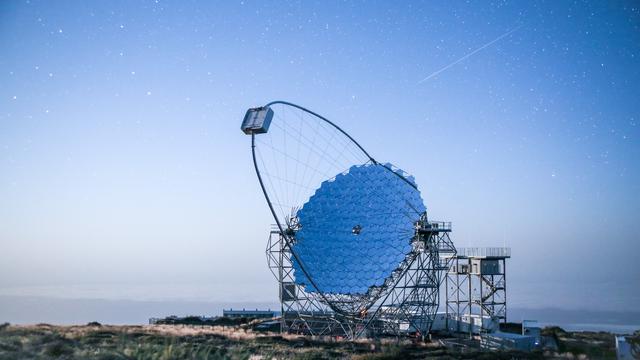Publication
The LST Collaboration Publishes its first Scientific Paper with Data from the LST-1
March 16, 2023
Gamma-ray GroupOn March 6, the LST Collaboration published its first scientific paper in the Astronomy & Astrophysics journal. The paper focuses on a multi-wavelength study of the unidentified ultra-high-energy gamma-ray source known as LHAASO J2108+5157.
In 2021, several new ultra-high-energy (UHE) gamma-ray sources, capable of emitting gamma rays above petaelectronvolts (PeV; thousands of trillions the energy of visible light), were discovered in the Milky Way by the Large High Altitude Air Shower Observatory (LHAASO). This represented a step forward in the search for PeVatrons, enigmatic sources in our Galaxy that can accelerate cosmic rays up to PeV energies and give rise to gamma rays at the highest energies. Under this new context, the LST Collaboration used the LST-1 to observe the source LHAASO J2108+5157, one of the PeVatrons seen by LHAASO without a known TeV counterpart, from June to September 2021 for a total of 49 nights.
“When the LHAASO Collaboration discovered that our Galaxy hosted multiple PeVatrons, it came as a huge surprise – we immediately decided to explore these sources and observed one of them with the LST-1 to find a counterpart at lower energies,” explains Jakub Jurysek, researcher at the institute of Physics of the Czech Academy of Science (FZU) and University of Geneva, and principal investigator of this study. “We could not confirm a detection, but we could set strong limits on the emission of the source and, thus, improve the understanding of this object’s nature compared to the scenario originally assumed by the scientific community.”
Even though a confirmed detection of the very high-energy emission would require deeper observations, the LST-1 data, complemented by a multi-wavelength study using public data from the XMM-Newton and Fermi-LAT satellites, already provide important information about the source. Contrary to previous assumptions, the low magnetic field and spectral properties obtained by the LST Collaboration are compatible with the hypothesis that the source is a Pulsar Wind Nebula or a TeV halo that can accelerate electrons to relativistic energies. Nonetheless, this scenario is challenged by the lack of a known pulsar in the surroundings. Another hypothesis that could explain this unidentified UHE gamma-ray source is that its emission is caused by the interaction between the gas of nearby molecular clouds and protons accelerated in the past by a Supernova Remnant, a leftover from the death of a massive star.
Despite the lack of a significant detection, the results show the LST-1’s extraordinary level of performance and its capability to provide robust observational constraints to test theoretical frameworks, which foretells the excellent results that will be obtained once the full CTAO array is operational.

